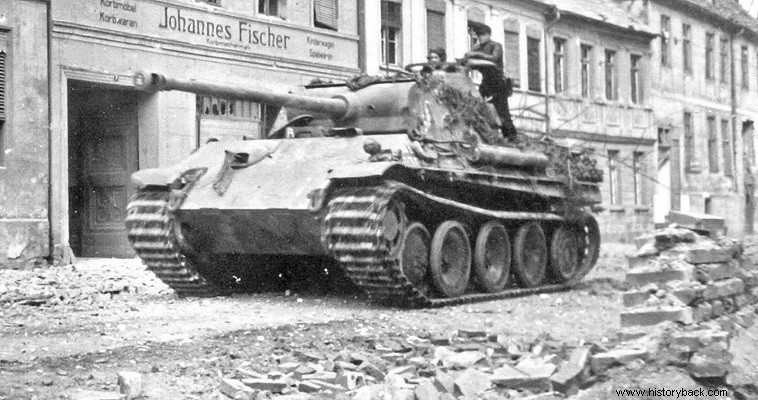
The Panther tank was designed as a response to Soviet tank superiority, both in quality and numbers. Its construction specifications were set in January 1942, while the Battle of Moscow was still in progress.
The prototypes appeared in August of the same year and the first production Panther left the MAN factories in January 1943. The tank was equipped with Maybach's powerful HL 230 engine, which produced 700 hp at 3,000 rpm, allowing for the Panther to develop a maximum speed of 46 kph
The weight of the chariot reached 44,800 kg. The increased weight was due to the heavy armor it carried, the thickness of which varied between 20 and 120 mm, on the Ausf F model. The Panther was equipped with the excellent long-barreled KwK 42 75mm, 70 caliber gun , which was able to penetrate solid 91mm thick chest, from a distance of 3,000 meters with a Pzgr. 39/42 and 105mm, at this distance, with a Pzgr projectile. 40/42.
At 2,000m. the piercing capacity of the cannon with the shells in question were, respectively, 116 and 145mm, while at 1,000m, respectively, they were 119 and 149mm. The tank carried a total of 79 missiles. In 1945 there were proposals to equip the tank with the 88mm KwK 43 L/71 gun.
The Panther received its baptism of fire in July 1943 in Kursk, where it did not perform as expected, due to its "childhood" diseases. Once the problems were overcome the tank became one of the most battle-worthy of the Panzerwaffe and a formidable opponent for any Allied tank, even the Soviet behemoths of the IS-2 type.
In its first battle the Panther presented many mechanical problems. Of the 200 surrendered, 184 took part in the battle. Of these, within 5 days, there were only 10 battle-worthy ones left. However, only 23 of them were destroyed by enemy action. But 56 were damaged, lightly or severely by enemy fire and mines, two were destroyed by fire in their engines and another 44 were put out due to technical problems. In compensation the Panthers supported the destruction of 267 Soviet tanks.
When the technical issues that initially plagued them were ironed out, the Panthers proved to be excellent killing machines, capable of destroying almost any Allied tank from long range. However, due to their volume, they were vulnerable in "closed" battlefields like that of Normandy, for example. The Americans estimated that it would take five of their own M4 Shermans to neutralize one Panther.
More than 5,000 Panthers were built by the end of the war. This number does not include the Panther hunters, the famous JagdPanthers with their 88 mm guns, which made their own history in the final stages of World War II. It should be noted that captured Panther tanks were also used by the Soviets and the French after the war.
